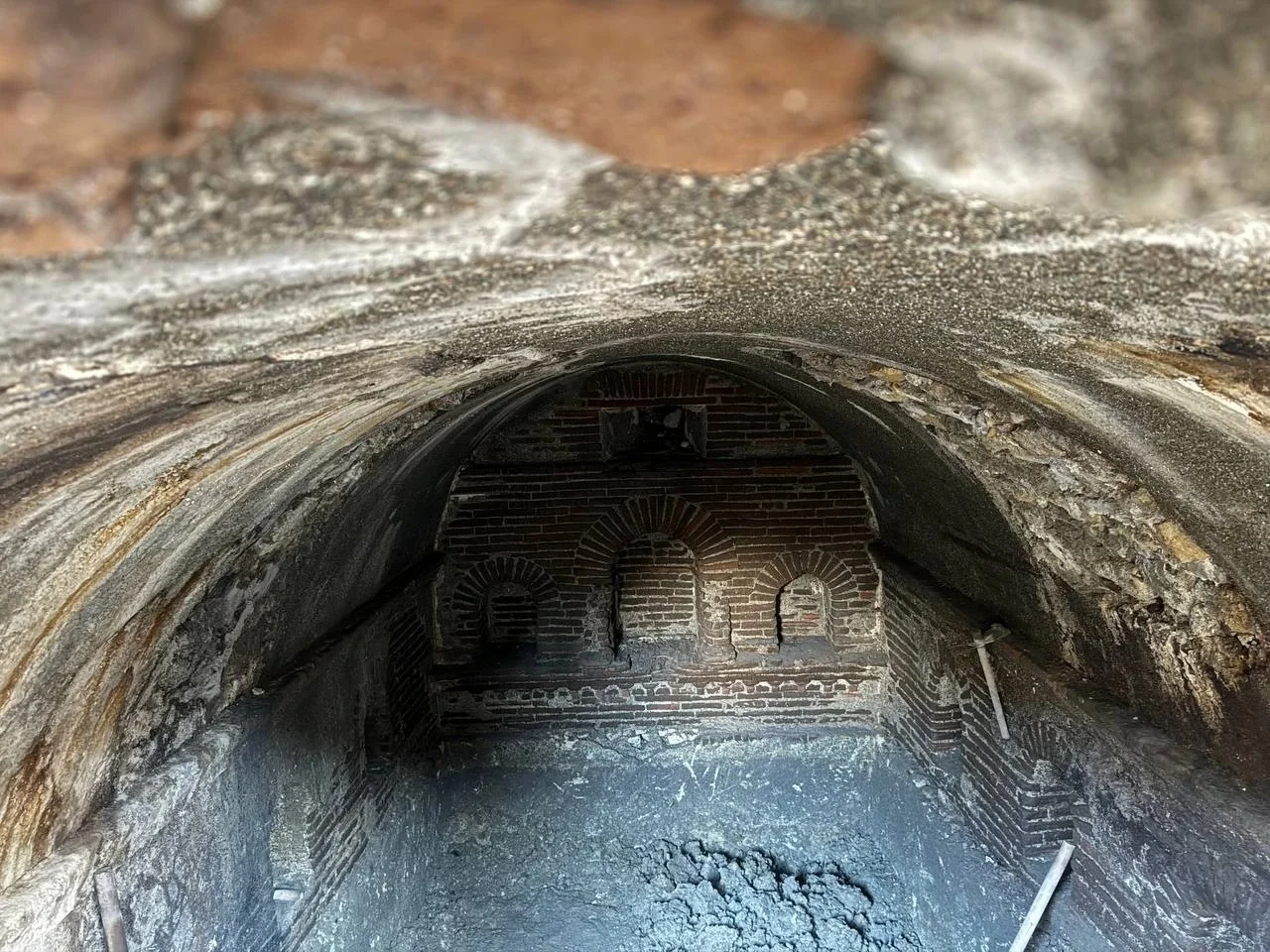Archaeologists are conducting a rescue excavation following the discovery of a vaulted structure in Antakya, Türkiye.
The structure was discovered beneath the debris of a two-story house on Kurtuluş Street which collapsed during the 2023 earthquake centred in Kahramanmaras.
The earthquake caused extensive damage to many of the street’s significant historical and religious buildings, which are now being restored through a revitalisation project led by the Ministry of Culture and Tourism with support from the European Union (EU).
According to government sources, the brick-built structure was found during debris clearing works and is reached via stairs that descend to a depth of 5 metres beneath street level.
The interior has a semicircular barrel-vaulted ceiling and a series of wall niches adorned with characteristic Byzantine-style arches.
The archaeologists suggest that the structure dates from around the 5th or 6th centuries AD and may have served as a small chapel or tomb during the Byzantine period.
Ali Çelikay, the acting director of the Hatay Archaeology Museum, highlighted the significance of the site, providing new insights into Antakya’s rich historical legacy.
Following further investigations to determine the structure’s function, Çelikay explained that the intention will be to incorporate the discovery into the region’s tourism offerings.
Header Image Credit : AA
Sources : Ministry of Culture and Tourism





